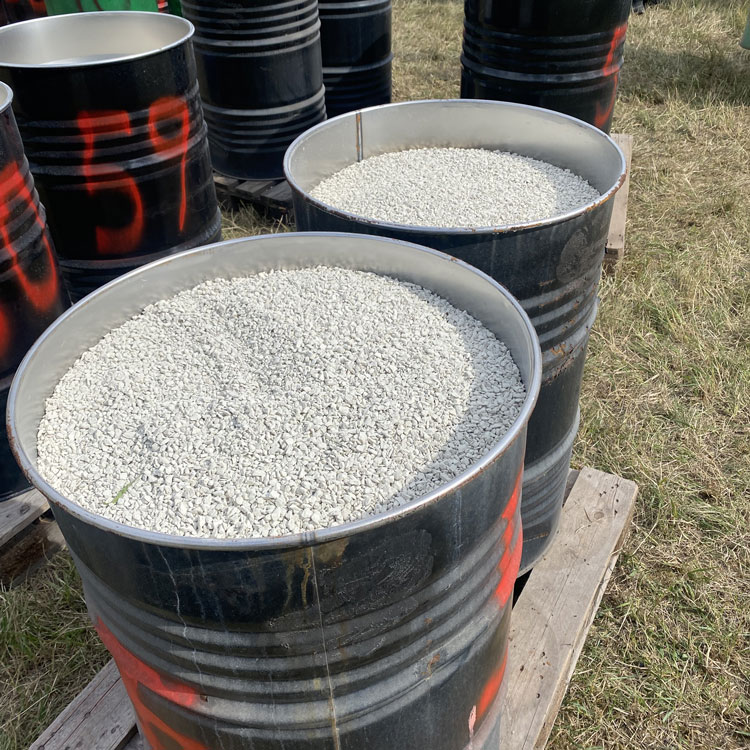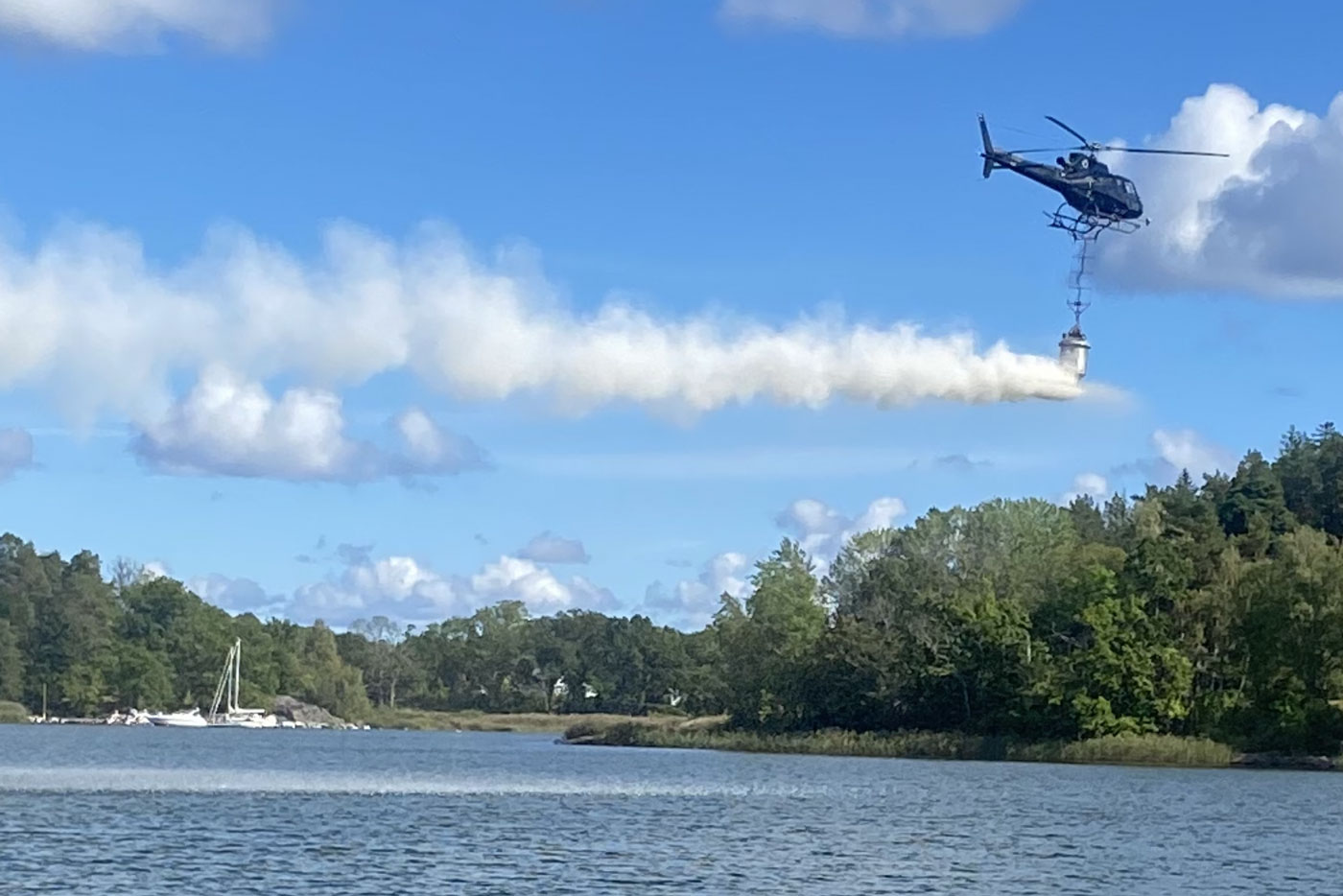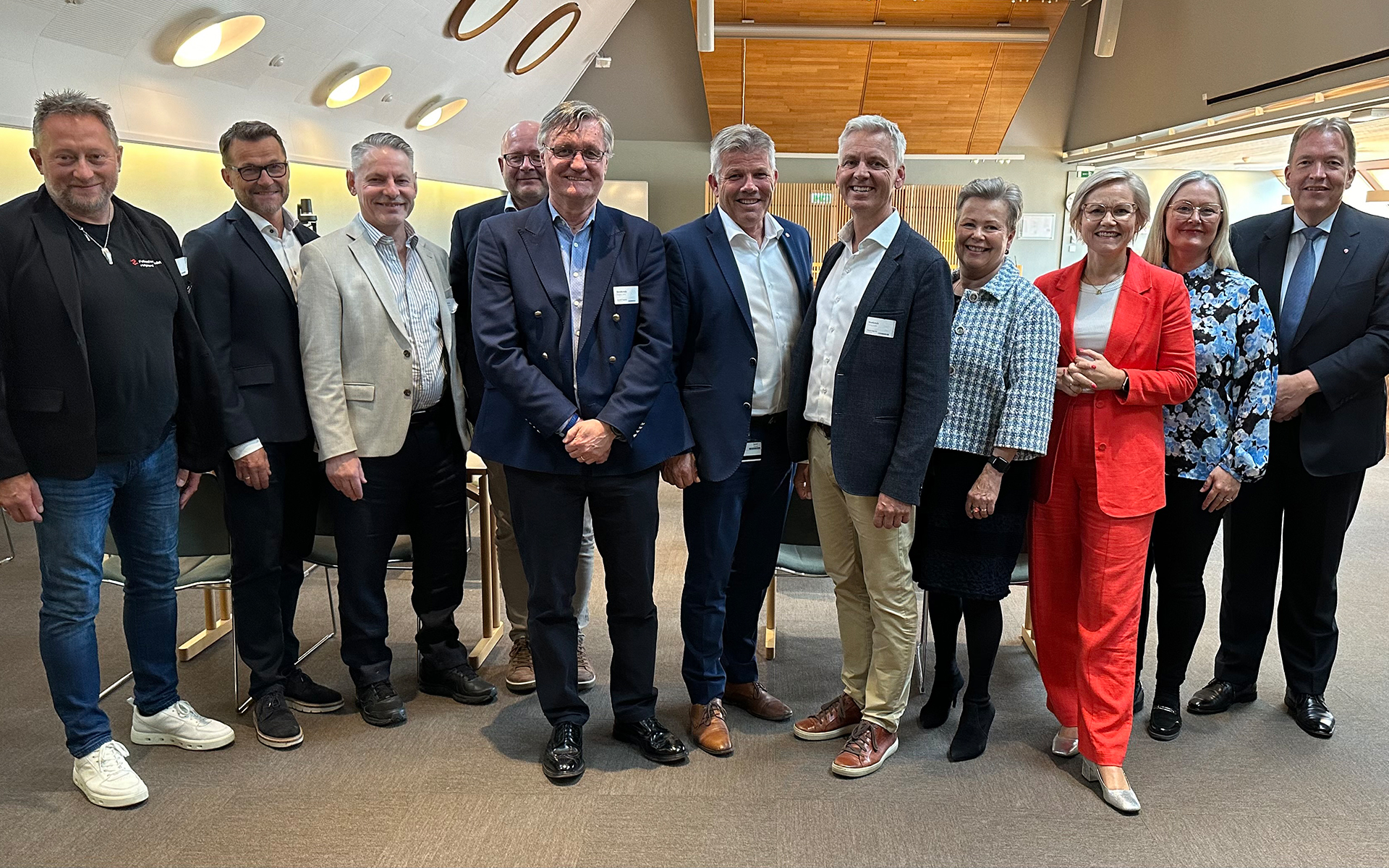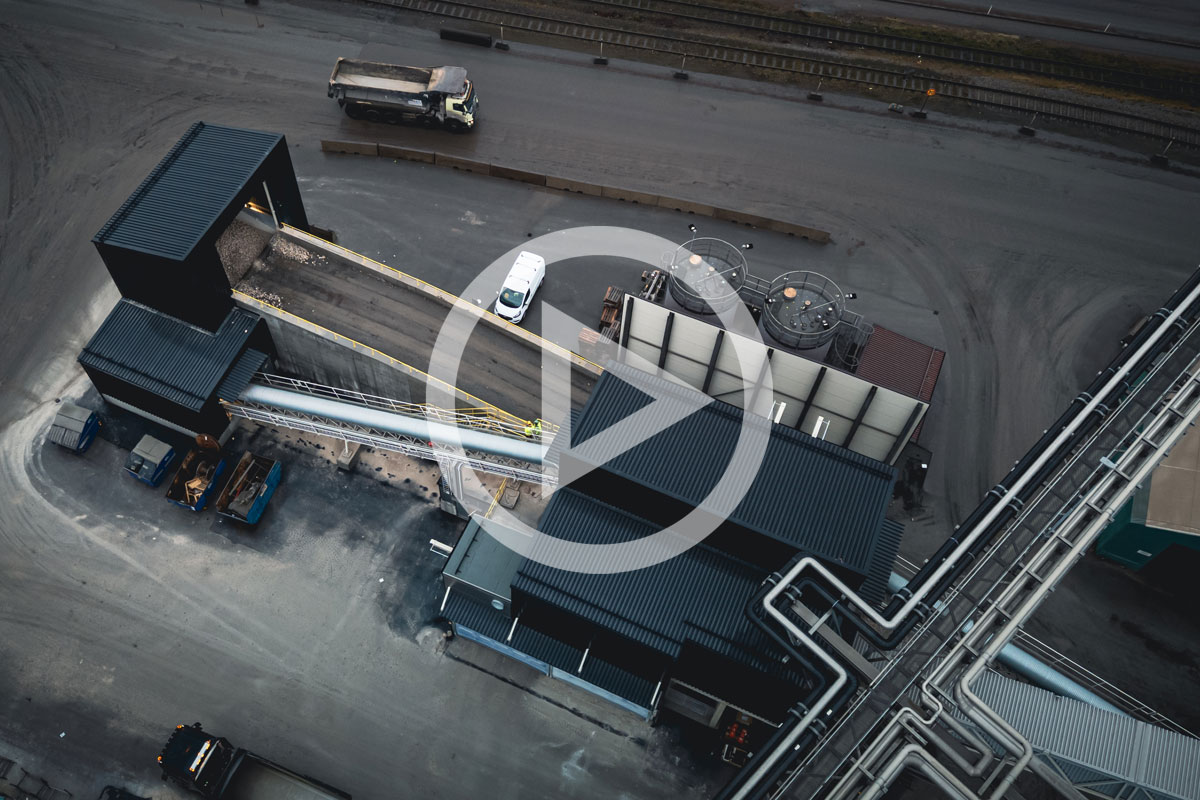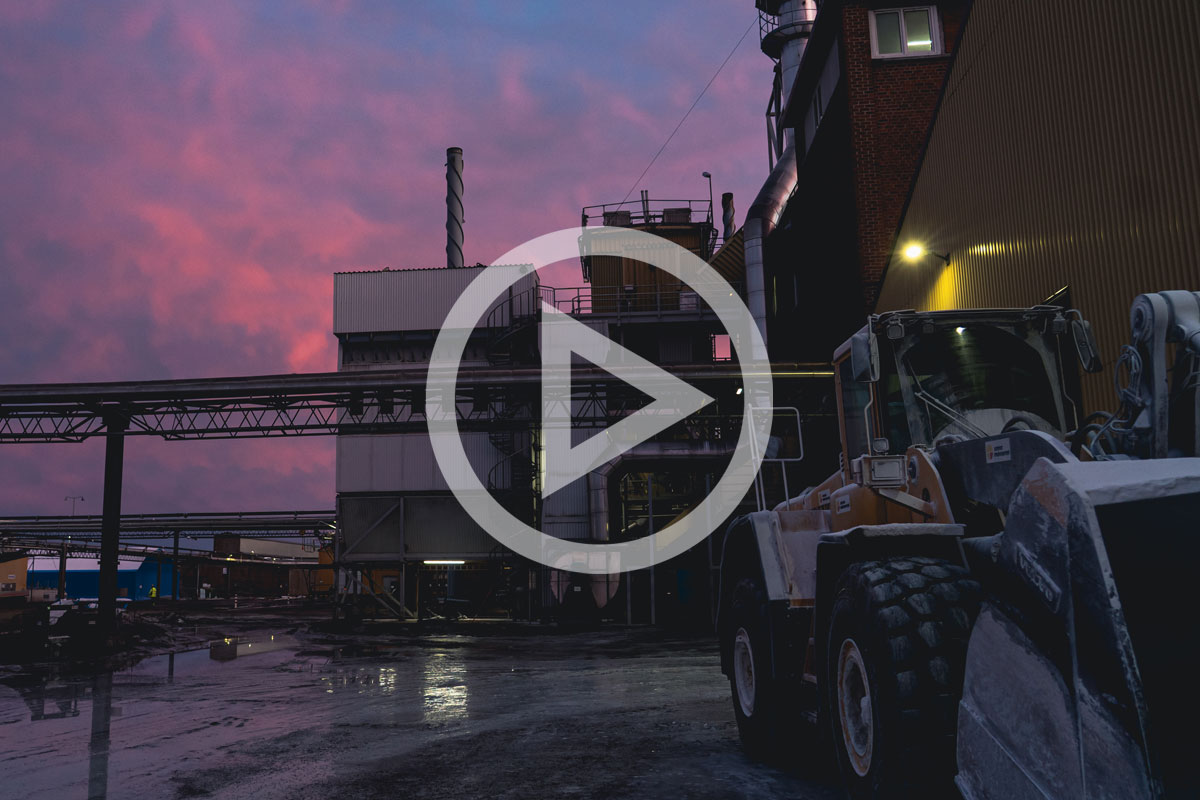
Since the late 1970s, lime has been successfully used to counteract acidification of our lakes and waterways. For just over a year now, SMA Mineral has been participating in a research project investigating the possibilities of using lime to also address the increasingly difficult problems of algal blooms in the Baltic Sea.
Every year, about 100,000 tons of lime are spread over Swedish lakes. The lime has a clear purpose. By restoring the pH value of the lake water, acidification can be counteracted, which improves the conditions for sensitive plants and fish species to survive.
Lake liming is often initiated by the country's municipalities, but is financed with the help of government grants.
Limestone flour - calcium carbonate is used in lake liming and the lime is usually spread using a boat or helicopter.
Algal bloom - an environmental problem
The Baltic Sea is generally considered one of the world's most eutrophic seas. Large amounts of nitrogen and phosphorus have been stored on the seabed for a long time. When the phosphorus is released and circulates in the sea water, problems with algal blooms arise - especially during the summer when the water temperature is higher.
Algal blooms involve strong proliferation of algae and, in particular, so-called cyanobacteria. The cyanobacteria in turn produce liver toxins, which pose a health risk to both humans and animals.
Lime could be the solution
To find solutions to the problem, an EU-funded Formas project led by Stockholm University was launched just over a year ago. Several players are participating in the project, including SMA Mineral.
“The project aims to reach a solution where phosphorus is bound to the bottom sediment using lime,” says Mats Lindberg, project manager at SMA Mineral. If the phosphorus can be isolated at the bottom, we hope to be able to reduce the algal bloom,
SMA Mineral is contributing to the project with materials, technical know-how and distribution.
“The raw material comes from our Stucks lime quarry in northern Gotland and has been burned at Cementa’s kiln in Slite. The lime is relatively coarse-grained, which means that, after spreading, it sinks to the bottom where it dissolves and chemically binds phosphorus permanently in the bottom sediment.
This prevents the phosphorus from becoming available nutrients during the algal bloom, Mats Lindberg continues.
The tests that are now being carried out are located in Kyrkviken in Valdemarsvik municipality and have been ongoing since the beginning of the year.
– The outcome will be measured continuously and a larger evaluation will be made in a year. So far, however, it looks promising, concludes Mats Lindberg.
